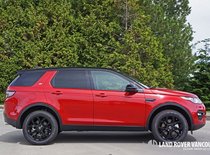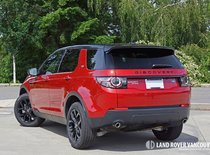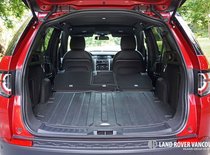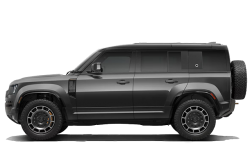2016 Land Rover Discovery Sport HSE Road Test Review
June 15 2018, Land Rover Vancouver
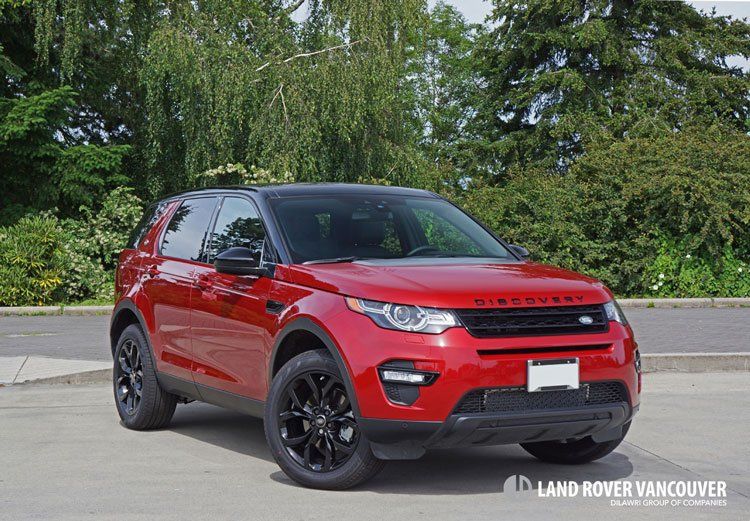
This might be the most useful compact luxury SUV available
If you haven’t already heard, Disco is back. No, not the music, although Justin Timberlake’s Can’t Stop the Feeling and last year’s number one Uptown Funk by Bruno Mars and Mark Ronson might have us thinking otherwise. Rather, I’m speaking automotive lingo so the Disco referred to here is the brand’s legendary Discovery.
Fans and owners of the now classic 1989 through 1998 Land Rover Discovery gave it the catchy Disco nickname back in the day, a moniker also ascribed to the Discovery II, 3 and 4 sold in Europe and other markets from ’98 through to the present, otherwise known as the LR3 and LR4 on our continent. In this review I’m not referring to these big, brawny mid-size models, however, but rather the new Discovery Sport, a compact SUV that can also has room for seven.
To be clear I’m talking seven adults, or at least there was more than enough room for my five-foot-eight medium-build body in the rearmost seats when the first two rows were also positioned for a comfortable fit. What’s more, the rear quarter windows provide outward visibility, a panoramic glass roof adds an open airiness, and real air can be directed to third-row passengers via separate vents and a fan speed controller.
The Discovery Sport’s roominess is just one reason why it only took eight months of 2015 to find 51.3 percent more buyers than its LR2 predecessor was able to attract in its final full year of 2014, whereas the new Disco’s sales are up 373.9 percent over the first five months of 2016 compared to same period of LR2 sales in 2014. That makes for a big Disco hit.
As is always the case with anything wearing the green oval badge the new Disco is fully capable off-road, but the Discovery Sport takes the sport side of the equation up a notch with impressive agility and absolute comfort no matter the road surface. Still, it feels more traditional SUV than the majority of its rivals that are best described as tall wagons, the Disco providing even better all-round visibility than average.
If you’ve driven an Evoque you’ll be familiar with the powertrain, the new Disco utilizing the same direct-injected and turbocharged 2.0-litre four-cylinder tuned to 240 horsepower and 250 lb-ft of torque, mated up to a state-of-the-art nine-speed automatic controlled by an even more advanced rotating gear selector with steering wheel paddles, plus four-wheel drive with the brand’s very skilled Terrain Response system standard. It moves forward with plenty of power while it gets a very stingy 11.9 L/100km city, 9.0 highway and 10.6 combined fuel economy rating.
The Discovery Sport’s cabin is nicely finished with a soft synthetic dash top that even includes a stitched leather dash pad on either side of the primary instrument cluster and ahead of the front passenger, plus soft-touch door uppers and yet more pliable synthetic surfaces elsewhere, while the leather used for the seat upholstery even smells rich. Of course, the roof pillars are treated to high-end fabric, plenty of stylish satin-silver finished metal accents can be found throughout, and all switchgear is superbly crafted with the buttons on the leather-wrapped steering wheel especially impressive, but it’s the quality and capability of its electronic interfaces that first caught my attention.
A high-resolution five-inch colour multi-information display sits within the primary gauges and a large eight-inch colour infotainment touchscreen overtop the centre stack, the latter a graphical delight similar in look and feel to a Windows Surface tablet with a quadrant layout featuring outdoor backgrounds on three of its four digital panels, climate control getting a beautiful sunset, connectivity functions highlighted by a classic red British phone booth sitting next to open pastures, navigation and mapping features depicted by an unnamed roadway curving off into the distance, and audio graphics merely getting stylized blue radio bands crossed by a red line for supposed selection. Believe me you won’t be disappointed with the audio systems’ capability, whereas the rest of the infotainment system lived up to what’s expected in the class and then some.
Additionally, a beautifully detailed dual-zone HVAC interface includes three circular dials trimmed in aluminum and rimmed with rubber, their centres filled with digital readouts for temperature control, fan speed, etc, while above it all is a simple overhead console featuring LED map lights, a switch for the fixed panoramic sunroof’s powered blind, and an always welcome padded sunglasses holder.
Without running down the entire list of standard and optional features, suffice to say the $41,790 base SE model is well appointed with highlights including all the mechanical components noted earlier plus auto on/off headlights, rain-sensing wipers, an electromechanical parking brake, pushbutton ignition, dual-zone auto climate control, eight-way powered seats, partial leather upholstery, 190-watt 10-speaker audio, Bluetooth with media streaming, multiple USB ports with charging capability, trailer stability assist, all the expected active and passive safety features and much more, while the $46,790 as-tested HSE gets upgraded with HID headlamps, LED signature DRLs, LED fog lamps, a heated steering wheel, heatable 10-way powered front seats with memory, grained leather upholstery, front and rear parking sensors, a rearview camera, panoramic sunroof, and more.
My tester also had its upgraded 19-inch twinned five-spoke alloys blackened out along with previously aluminized exterior trim finished in the same inky black treatment for $500, while its roof was also painted black for an additional $500 and its gorgeous Firenze Red Metallic paint added another $1,200. Navigation noted earlier adds $850 and the Black Morzine headliner $300, while its third row of seats came as part of a $1,900 5+2 Seating package that includes the third-row climate control and high-level vents noted earlier, along with a powered USB port. Those who still want more can outfit this HSE with plenty of additional packages and options or alternatively choose $50,290 HSE Luxury trim.
The upgrade to a third row doesn’t seem to take away from cargo capacity. The 50/50-split rearmost seatbacks stow easily via pull tabs on their backsides that automatically drop the headrests before laying flat and exposing 926 litres (32.7 cubic feet) of available space, while the second row can ultimately allow for 1,894 litres (66.9 cubic feet) of total volume yet otherwise splits in the optimal 40/20/40 configuration to allow skis and other long items down the middle with rear passengers seated comfortably next to the windows to enjoy heatable cushions if so upgraded.
In summary, the 2016 Discovery Sport HSE’s highly utile yet decidedly upscale interior, superb digital interfaces, excellent on-road dynamics, promised capability off-road, good overall efficiency and superb styling thoroughly impressed.
Story credits: Trevor Hofmann, Canadian Auto Press
Photo credits: Karen Tuggay, Canadian Auto Press
Copyright: Canadian Auto Press Inc.

